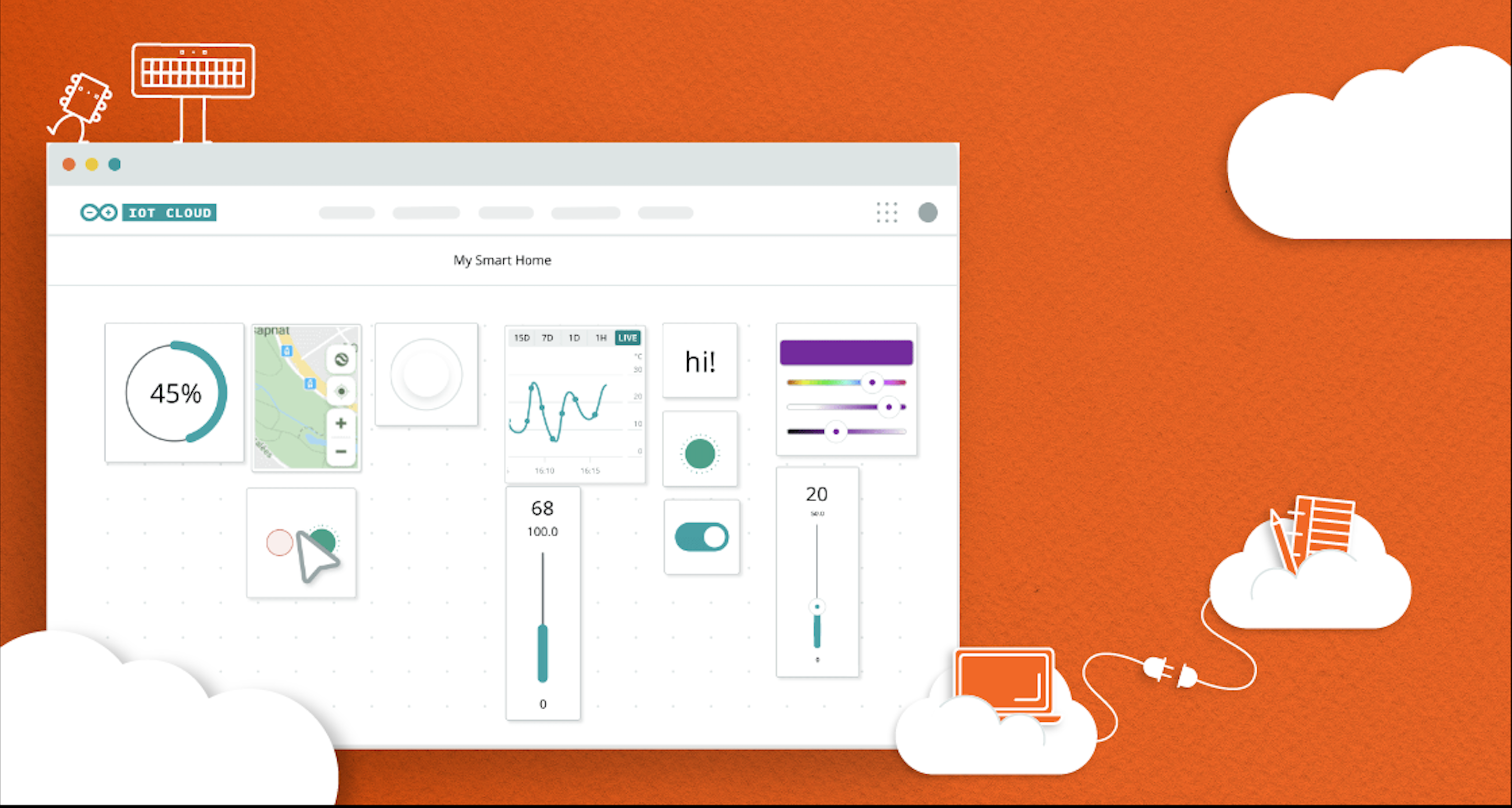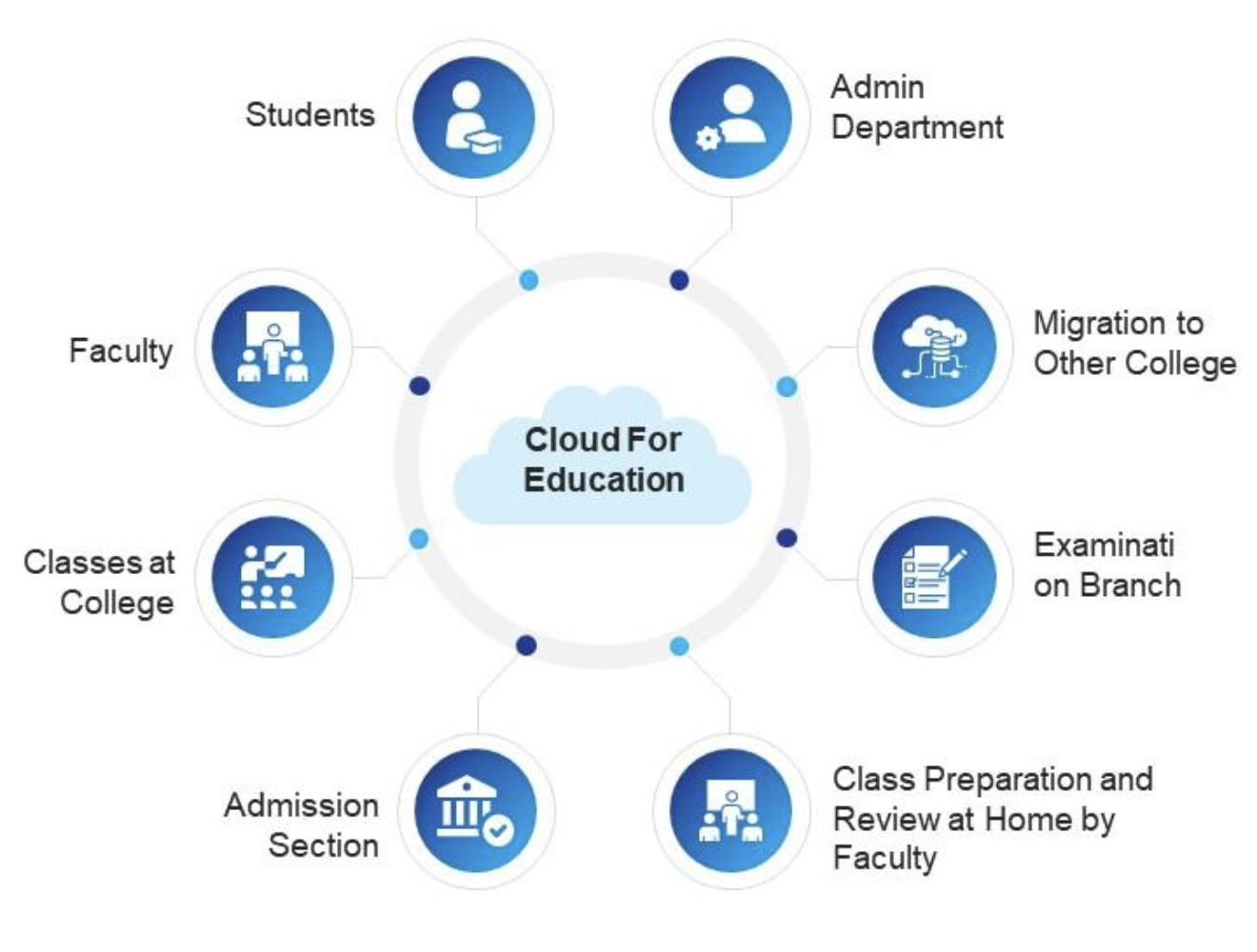
At its essence, the Cloud is online data storage and computing resource services. It’s a convenient way to store educational materials and allow digital learning experiences.
What is the Cloud?
The Cloud, more precisely known as cloud computing, is the online system that includes both data storage and computing resources or tools. Many companies, such as Google for example, offer both free and paid versions of Cloud services.
Free versions tend to offer limited features and a data cap, while paid versions are customizable, have more features and functionality, and offer higher storage capacity typically based on a subscription plan.
This is an illustration of what the Cloud “looks” like in education:
 source: Slide Team
source: Slide Team
Using the Cloud is basically very similar to using your own desktop, laptop, or handheld device computer. You can store any data such as videos, documents, and photos. You can also use various software applications, including office applications and games.
However, the main difference is the non-locality of these resources. Both the data storage and the computer system resources are distributed over various computer servers in various geographic locations.
You need to sign up for an online account with a username and a password to access the Cloud. You also have the option to add additional security features such as biometric authentication and SMS text authentication.
Since the system is online, you can access the Cloud using various devices and from virtually anywhere that has internet connectivity. You may access the Cloud either through web browsers or through specific software applications that you need to install on your desktop/laptop computer or handheld device.
Some examples of cloud computing and data storage services are the following:
- Google Cloud
- Microsoft 365
- Workplace OS23
- Adobe Creative Cloud
- Hubspot
- Slidepocket
What is the impact of Cloud-based learning?
The importance of using the Cloud in education and the professional world was clearly emphasized during the COVID-19 lockdowns. For almost two years, educators and students communicated and accomplished tasks using Cloud services.
These include video conferencing, presentations, and virtual classrooms. The impact of Cloud-based learning has mostly been positive. It allowed students to communicate with the teachers, attend classes, and accomplish academic requirements without the need for physically reporting to school. It became the main tool for education during the lockdowns.
Five benefits of using the Cloud for learning
1- Real-time collaboration - no matter where you are
As a teacher, you can interact and teach students regardless of their location, as long as there is a reliable internet connection. Students can submit written work, take exams, and even do virtual experiments, such as with Arduino’s Science Journal app, from home (or from anywhere).
You can record and track their progress automatically. You can check their tasks and progress in real time. Students can also easily work with other students who are either located in the classroom or elsewhere.
2- Flexibility in learning
Depending on your school’s policies, you may have hybrid classes or even asynchronous classes. Hybrid classes can combine both in-school and online learning.
The main advantage of this option is that it would lessen the possible gaps in delivering lessons, especially for students who are unable to physically report to school. Similarly, the asynchronous option would make learning more convenient and conducive for students who want less supervision while working at their own pace.
3- More efficient teaching
Even in fully face-to-face classes, the Cloud still has a very significant role to play in terms of teaching and learning. Teachers can become more efficient in teaching and evaluating their students. For example, instead of manually checking test papers, a teacher may simply create an online exam that automatically can be checked. Data can be logged, analyzed, and stored in science classes - in fact, the Cloud makes an extremely positive impact on STEAM learning.
You can more easily prepare online visual aids that are dynamic and appealing to students. These can easily be accessed by students using their devices or be presented in the classroom. This is particularly useful when students need to carefully review and follow instructions.
4- Reduced budget impact
Using the Cloud for teaching and learning can be less costly for both the school and students. There would be less need for printing on papers, which means that there would also be less need for ink and printers. It reduces the reproduction cost of learning materials, including books.
You have access to an entire library of recommended reference materials available online. It could also mean less need for other physical teaching materials.
5- Enhanced data security and accessibility
Unlike storing data such as lesson plans and class records in your laptop, the Cloud provides better security and accessibility. Since the Cloud is distributed over many computer servers, there is very low probability of data loss or corruption. Cloud services include top of the line encrypted firewalls and antiviruses.
You can also easily access and modify your data from virtually any location without relying on just a single device. Data security and accessibility also applies to students who are using the Cloud.
The Arduino Education Cloud
Do you use Arduino in your classroom? If you’re an educator managing a group of students, you can set up a virtual shared space called the Arduino Cloud - think of it like a digital classroom. In this shared space, you can see all the kits you have registered and add courses and lessons for your students to do. The space is compatible with all Arduino Education kits, and you can share your lessons via Google Classroom.
The main benefit of using this shared space is easy access to all your content and lesson plans for both you and your students. You can share your courses with any number of people and switch between them at any time.
The ‘educator’ version of the online content includes educator tips, logbooks, and more.
Find out more about the Arduino Cloud.